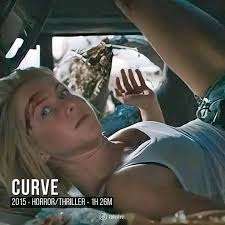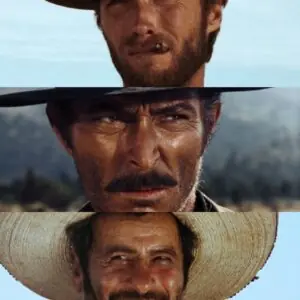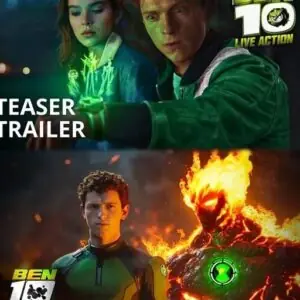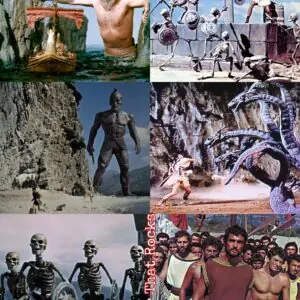Death Curve (2015), directed by David K. Franks, is an indie psychological thriller that attempts to blend teen horror with surreal suspense, offering a twisted take on guilt, memory, and urban legends. Set around a notorious stretch of highway known as “Dead Man’s Curve,” the film follows a group of college students who take a late-night detour and find themselves trapped in a looping nightmare where their past secrets come back to haunt them—literally.
At its core, Death Curve draws from familiar horror tropes: the remote location, the cursed road, the group of unsuspecting teens, and a mysterious killer (or force). But what sets the film apart, at least in intention, is its use of nonlinear storytelling and psychological ambiguity. Franks clearly aspires to something more layered than a typical slasher. Unfortunately,ambition alone doesn’t guarantee success
Plot Summary
The film begins with an eerie flash-forward: a lone car burning in the woods, the screams of someone unseen, and a brief glimpse of a masked figure. From there, it cuts back to the main storyline: five friends—Amy, Marcus, Jess, Tyler, and Sam—celebrating the end of midterms with a road trip. They decide to take a “shortcut” through a dangerous curve that is rumored to be haunted. As night falls and the fog sets in, strange things start to happen: their GPS malfunctions, the car keeps circling back to the same spot, and one by one, the friends begin to vanish.
While this sounds like a setup for a conventional horror flick, Death Curve tries to infuse deeper themes. Each character has a hidden guilt or trauma tied to a mysterious accident that occurred a year earlier. The titular “curve” becomes a metaphysical space where their regrets manifest as hallucinations, and possibly as the killer stalking them.

Performances
The performances are a mixed bag. Lead actress Emily Raven as Amy delivers the most consistent performance, managing to convey fear, confusion, and resolve without going over the top. She anchors the film emotionally, especially in the final act when the story pivots toward psychological horror.
The supporting cast, however, is less compelling. Some of the dialogue feels stilted, and the chemistry among the group is hit or miss. The characters often fall into cliché: the jock, the shy guy, the mean girl, etc. While this might be intentional—an homage to ‘90s slasher films like I Know What You Did Last Summer—it doesn’t always serve the film’s more ambitious narrative aspirations.
Direction and Cinematography
Franks’ direction is atmospheric but uneven. The film’s strongest asset is its use of space and lighting. The fog-drenched roads, dense woods, and isolated gas stations contribute to a claustrophobic mood. The cinematographer, Peter Langston, uses desaturated colors and long, still shots to emphasize the characters’ disorientation and dread. There are moments of real visual beauty, especially in the transition scenes between reality and hallucination.
However, the pacing is inconsistent. Some scenes drag on longer than necessary, especially in the second act, where the characters wander in circles—both literally and narratively. The film wants to build suspense slowly, but it often feels like it’s spinning its wheels. A tighter edit could have improved the rhythm without sacrificing the psychological tension.
Themes and Symbolism

One of the more interesting aspects of Death Curve is its symbolic use of the road as a metaphor for guilt and avoidance. Each character is literally stuck because they are metaphorically stuck in denial or fear. The “curve” punishes not just those who physically cross it, but those who have morally veered off course.
There’s also an intriguing (if underdeveloped) suggestion that the supernatural force may not exist at all. Are the deaths real, or just hallucinations induced by guilt and trauma? Franks leaves this question open-ended, which is admirable, though it may frustrate viewers looking for more concrete answers.
The film references urban legends, Greek mythology (especially the concept of purgatory), and even some Kafkaesque elements of repetition and helplessness. But these allusions remain surface-level; the film introduces big ideas but doesn’t always follow through.
Special Effects and Sound
Given the film’s modest budget, the special effects are surprisingly effective. The death scenes avoid gore in favor of eerie ambiguity—characters disappear or are seen whispering to shadows. The minimalism works in the film’s favor, reinforcing its psychological edge.
The sound design is also a highlight. Creaking tires, wind that sounds like whispering voices, and sudden silences build tension. The score by Jared Ellison complements the film well, though it occasionally overplays the drama in quieter scenes.
Final Verdict
Death Curve is a film that reaches high but doesn’t always land. It tries to be both a teen horror flick and a psychological mystery, and while it doesn’t quite succeed on either front fully, it offers enough originality and mood to be worth a watch for genre fans.
Its flaws—uneven acting, sluggish pacing, and undercooked themes—are balanced by its atmospheric direction, intriguing premise, and Emily Raven’s grounded performance. For a low-budget indie horror film, Death Curve is an ambitious, if flawed, journey into the darker corners of the human psyche.
Rating: 6.5/10
Would you like a shorter summary or a version adapted for a blog or publication?





